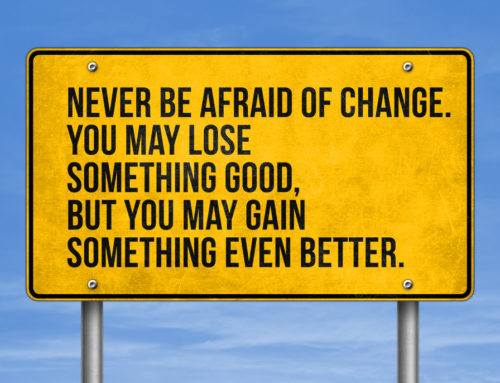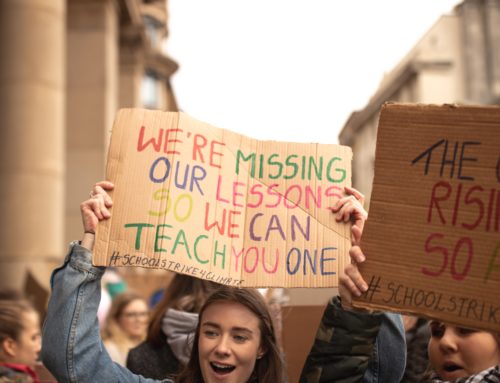You don’t have to be psychic to know when there’s conflict brewing.
There are some rare occasions when an argument or altercation arises out of nowhere. Most of the time, however, we have a sense that we’re not seeing eye-to-eye with someone a long time before the situation erupts.
 Little niggles and irritations can easily mount up, especially when it’s someone you spend a significant chunk of your time with. A member of your team you work with daily is likely to rile you more quickly than that irritating person you only encounter at a quarterly meeting. (If it’s someone you share living space with, things are likely to come to a head even faster.)
Little niggles and irritations can easily mount up, especially when it’s someone you spend a significant chunk of your time with. A member of your team you work with daily is likely to rile you more quickly than that irritating person you only encounter at a quarterly meeting. (If it’s someone you share living space with, things are likely to come to a head even faster.)
Most of us don’t enjoy conflict, so despite our best intentions we tend to ignore our intuition when it comes to preventing it. We might decide to ignore it, hide the way we’re feeling, or hope the person will change. Or we take the opposite tack, and decide we’ll approach it “head on”, reasoning that things need to come to a head so that we can “clear the air” by telling them directly what we’d like them to change.
The truth is, neither of those paths is satisfactory when it comes to effectively preventing or resolving conflict. There are far more effective ways to address conflict before it escalates – here are five steps you might want to consider to make that process flow a little easier.
1. Listen to your gut
If you have a sense that someone’s frustrating you, pay attention to it. You’re probably not hiding your feelings as well as you think and once you’re beginning to experience irritation with someone, you’ll almost certainly be giving off subtle indications that can exacerbate things.
Notice your physical response: do you feel tongue-tied, sweaty-palmed, or does your pulse race when you speak to them? Sometimes it’s just a feeling that you want to avoid talking to someone, or a sense that there’s “something going on” under the surface of your interactions. Take note – and be ready to start taking action.
2. Identify the issue
What’s at the crux of the matter? A general feeling of annoyance can feel hard to take action on. So a powerful place to start might be by asking yourself how you’d like the other person to change their behaviour. Maybe you feel as though they’re patronising you, acting more helpless than they seem, or being outright confrontational.
Is there something in their attitude that’s frustrating, or a specific behaviour you’d like them to change? Do you feel angry, resentful or upset when you interact with them?
3. Be Honest
Deciding that the other person’s just unreasonable, putting it down to a ‘personality clash’ or burying your head in the sand isn’t the answer to preventing things from getting worse. We might think we’re hiding our feelings well, but most of the time the other person will sense that something’s getting in the way of clear communication. Perhaps it’s inconsistency, when we’re submissive one day and assertive the next. Or it might be subtle signals unconsciously demonstrating that we’re not connecting with their message, or respecting how they communicate.
The Spiral of Disempowerment® shows us that a breakdown in communication can easily deteriorate further. So try to be honest with yourself about how you feel, including everything that you’ve experienced.
4. Do the work
Knowing what it is you’d like to change opens up opportunities for you to reflect on how that need is showing up for you. We know that our ‘stories’ – our version of events – frame situations and can actually trigger the behaviour we’re trying to avoid. (That might sound counter-intuitive, but when we’re immersed in our feelings, tiny changes in our attitude have a surprisingly big impact on the people we are seeking to change.)
So ask yourself how you’re being in this interaction, and consider how you can take a different approach. It’s important to remember that this isn’t just about what you do, but about how you’re showing up, so know that if you’re feeling resentful, angry, intimidated, irritated, hurt, manipulated, shut down etc. it will be sensed on some level by the other person, no matter how well you think you are hiding it. The good news is, you don’t need the other person to change in order for you to feel differently.
5. Move towards being at Peace
Being at Peace means returning to your natural, effortless, best self – without the headspace that’s taken up by your ideas of what you’d like to change about the other person. It’s this transformation that will bring you the clarity, peace and calmness to be your best self, and can completely turn relationships around before they become outright conflict. In our War to Peace® workshop you’ll experience the simple process you can use again and again to move out of conflict before it starts, and enjoy greater influence, clarity and productivity as a result.
It’s very natural to want to avoid conflict, or alternatively to feel as though things need to “come to a head” before we make changes. But being aware of how you are being before direct conflict arises is a much saner and smarter way to manage your relationships. In business, you’ll avoid derailing interactions at an inopportune moment. And, personally, you might be surprised, once you’ve worked on your own internal dialogue, how little you need the other person to change in order for you to have an easier relationship.
Over to you
- Is there someone you avoid talking to when you can, or who you find yourself running over conversations with in your head after you’ve talked to them? Maybe you’ve found yourself offloading to a mutual acquaintance, seeking support from someone else who finds them difficult? It’s great you’ve noticed this. Know this is a sign that you have been / are being triggered by this person, and means that you are allowing them to influence you to move away from being your best self.
- Where are the “trouble spots” in how you are being, whether at work or at home? If you’re struggling to answer this, just notice and firstly write down all your labels / thoughts about them. Then be honest with yourself about your feelings and external behaviours e.g. I feel resentful, I feel hurt, I feel angry, I withdraw, I get aggressive, I pretend I’m okay when I’m not, my tone of voice changes when I speak to them, I feel ‘on edge’, I can’t find the right words, I try to out-smart them, I feel intimidated etc.
- Consider new, more helpful labels for the people you’re struggling with. What other labels could you give them or their behaviour (in your head or on paper) that would bring out the best in you? e.g. if you view them as over-critical of you, you could choose to see them as someone who cares about you (even though you find the way they are currently communicating this triggering); if you see them as “irritating” you could choose to see them as someone who is helping you to develop the skill of patience. Start experimenting with these labels to see how you can bring out the best in you when you next interact with them.
Could you, or someone you know, benefit from War to Peace®?
If you, or someone you know, could benefit from learning more about how to remain effective and untriggered at work and at home, consider War to Peace®. These workshops can be held in your workplace and away from it. Spaces for our next public course that anyone may attend can be booked here:
©Halcyon Global
Photo Credit: Christian Schnettelker/Flickr





Leave A Comment